Activities with money are a common staple in math classes for life skills students. But so many times, we focus on teaching what money is and its value, and we miss teaching students how to use it effectively.
Knowing how much coins and bills are worth is important. But being able to USE money in real-life situations is more engaging and more functional for students. These 4 fun activities with money are ways to practice these skills in a meaningful way in the classroom.
Restaurant Math: Using Menus for Activities with Money
Restaurant Math: Diner Money Unit is a fun real-life activity with ready-made menus already differentiated for 4 skill levels. Students complete task cards for how much money they would need to purchase items on the menu.
Each of the 4 menus has a different skill level. One has prices only in dollars with no change. Another has change in 25 cent increments. The third has change in 10 cent increments and the fourth has typical prices of all change options.
The 200 included task cards are also differentiated so that students find the price of buying one item on the menu, 2 items or 3 items. This works on basic addition as well as money skills. This way some students can make a purchase with just a dollar bill while others need more cash and can practice making change. And students who are able can use the cards with 2 or 3 items and practice their math skills as well as their money concepts.

This allows students who are just starting with counting bills or learning coin values to complete the same activity as a student who is more proficient at money exchange. Since it’s differentiated it’s easy to use the activities in small groups.
In addition to using task cards, you can have students use real money to pay their bill based on what they want to order. you can also extend it by giving students a set amount of money and asking them if they could afford to purchase certain items or collections of items.
This mirrors the real world situation of the way money would be used in a restaurant. It also helps students begin to understand the true value of money in the community.
Diner Math is available in my TpT store as a ready-made print and go activity. But, without it you can do similar activities with local restaurant menus or finding menus online.
Buy the Reinforcers: A Fun and Engaging Activity with Money
Another hands-on activity is to give students money and put prices on reinforcing or desired items. Using items you frequently use for reinforcers for students as something they can buy makes the exchange of money for items tangible. Typically our students learn best with hands-on activities like this. And it helps them to practice exchanging money for something like in a fun way.
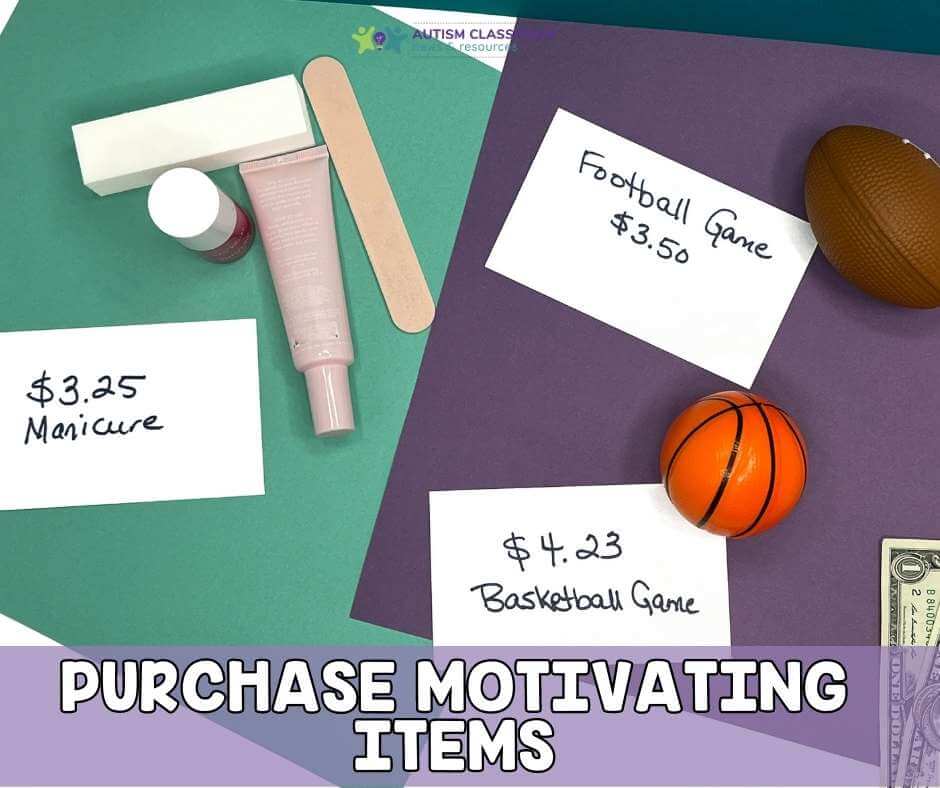
You can make this activity easier or harder by changing out the price tags to easier (single or multiple dollar bills) or more complex (bills and change) prices. You can also have them learn to determine their correct change.
Determine More or Less Than with Store Flyers
This is one I did for a Quick Tip Tuesday a while back. Using grocery flyers from your mailbox or local store, cut out a variety of coupons with different values. Create a simple file folder with envelopes that are more or less than $1 or $5 (or change it out for different amounts of money over time). Students then have to determine if a coupon saves them more or less than $5. This can be a good independent work task, but it also is a great group money activity where you take votes or use response cards for students to answer.

If coupons in your flyers don’t lend themselves well to teaching this math concept, use sales prices with the picture of items from the flyer. You can also cut out the pictures from the flyers and give them prices. Using real-life activities like grocery shopping can be an effective way to help students generalize their money skills and concept of money to community settings.
Make Purchases at a Staged Grocery Store
Students love activities with money with real-life situations. It makes it more likely that they will use this important skill in a variety of ways. Regardless of grade level, students can make exchanges for purchases in a real store. But it can be very helpful to set up a mock store to practice in before going up to the real cashier in a grocery store.
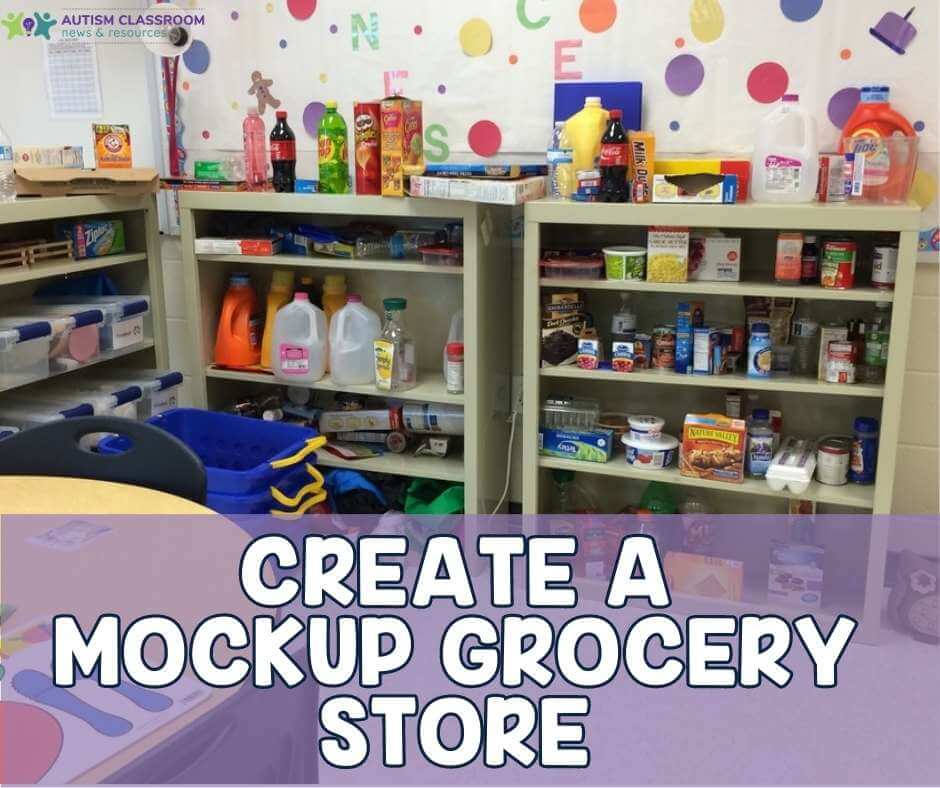
This can be set up in a corner of your classroom. Or you can have them order groceries from a catalog. The catalog can be flyers you have gathered, or grab the store from my Grocery Store Megapack to set it up.
Have them create a grocery list and then find the price of each item. Depending on their skill level, students can complete this activity in different ways. For instance, younger students or those who are still working on value of coins, could practice making purchases for candy or smaller items at the store with lower prices.
Students with more advanced skills whose money concepts are more developed might make more complex purchases (e.g., with coupons or multiple items). They might even enjoy running the cash register and making change for other students’ purchases.
Tips for Activities with Money Instruction
You can supplement this instruction with money templates we have for free in the Free Resource Library. The templates allow you to do instruction around the value of each coin and help students by giving them a template that matches the price of what they need to buy. For instance, if they are buying a slinky for 75 cents, use the template for 75 cents. They can match the coins to the template as visual examples, match up the number of coins, and make the exchange.
When I set up fun activities like this, I really prefer to use real coins and bills as much as possible. Real money just feels different than play money and students know that. However, that’s not always possible, so sometimes plastic coins and printed paper has to make do. In general though, especially with older students, it’s nice to use real money because they can then use that same money to make purchase at the vending machine.
Fun Money Games
Hopefully this gave you some ideas of how to bring money into your math centers or just explore some fun ways to teach money skills to your students. Whatever method you are using to teach teaching money concepts to your students in special education, clearly money identification and coin value are a part of it. But it’s so important for students to undersand what money can do for them and how it work. We all have had times in the store when we don’t know if we have enough change in our wallet to make the purchase.
While this happens less often with debit and credit cards being used more, those could be an alternative method for making purchases for your students in special education as well. But it’s important to remember the importance of still understanding money amounts so that students learn whether they have enough money in their account to make that purchase.
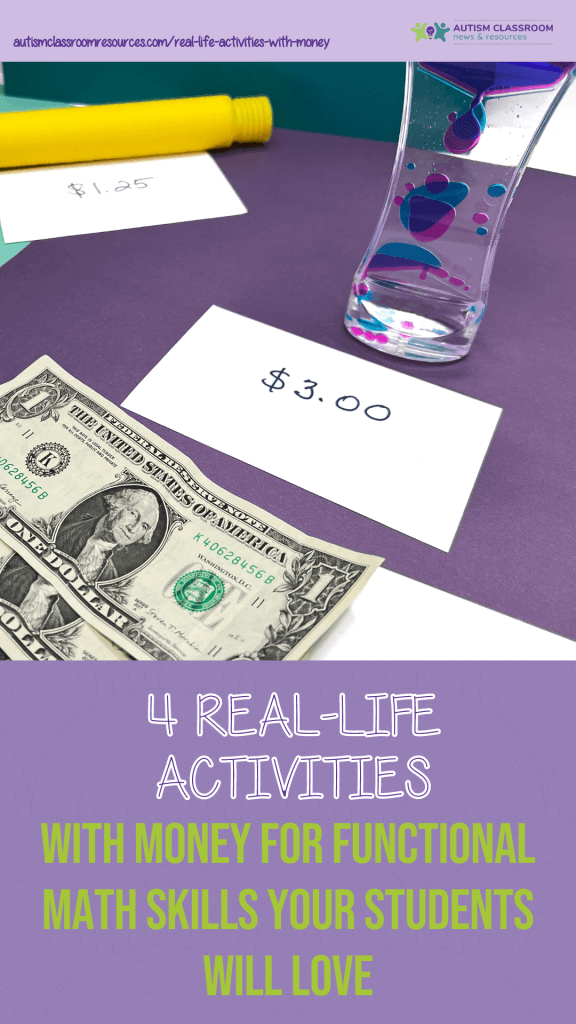

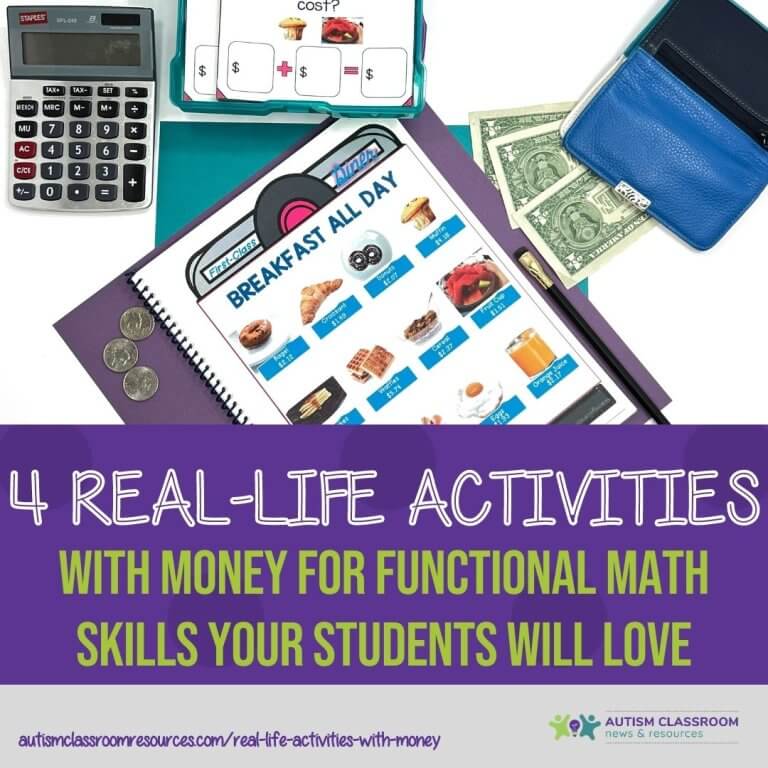
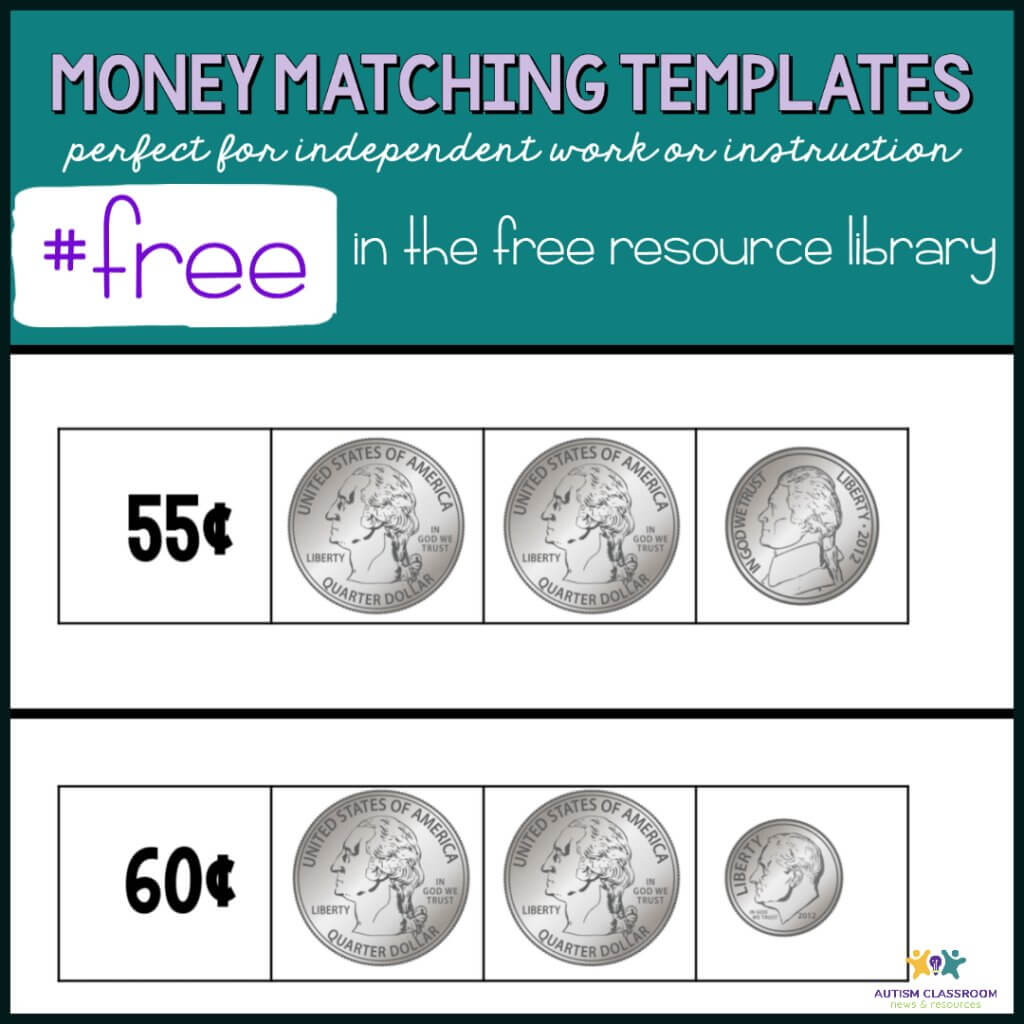



![Summer resources to help survive the end of the year in special education [picture-interactive books with summer themes]](https://autismclassroomresources.com/wp-content/uploads/2018/05/SUMMER-RESOURCES-ROUNDUP-FEATURE-8528-768x768.jpg)
